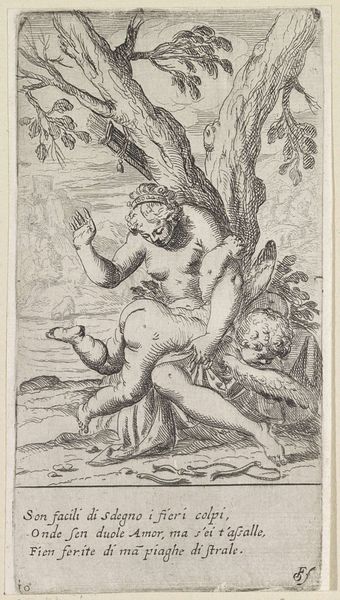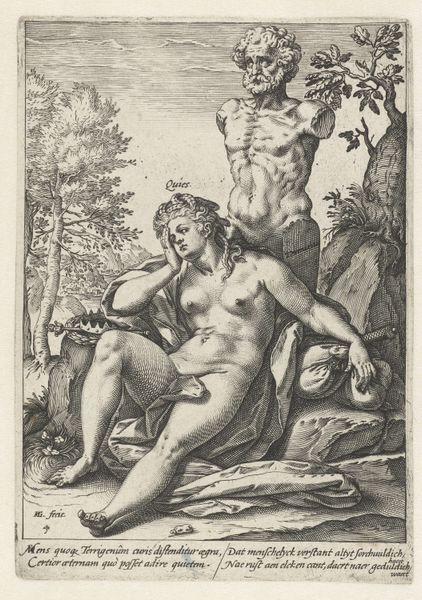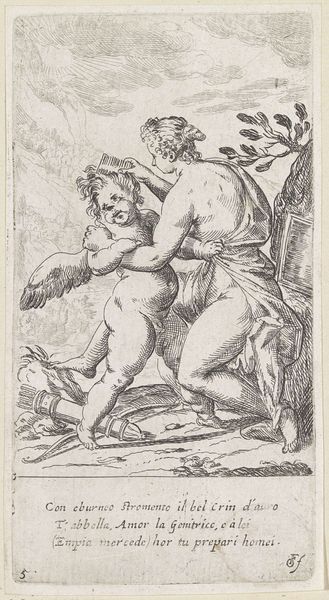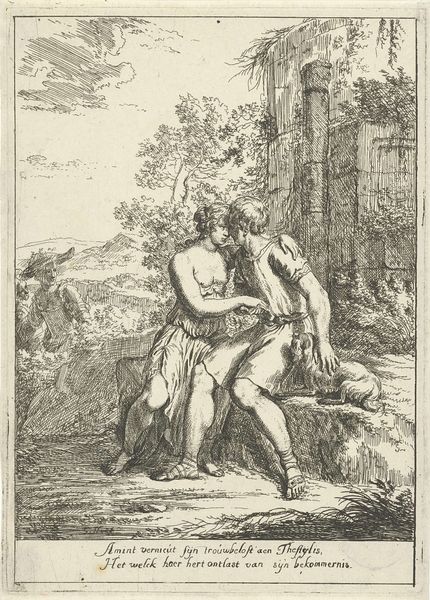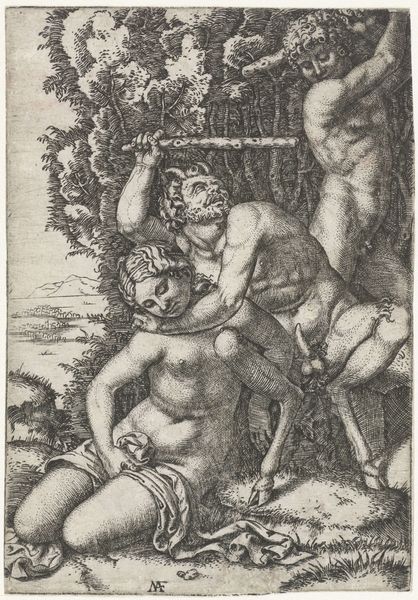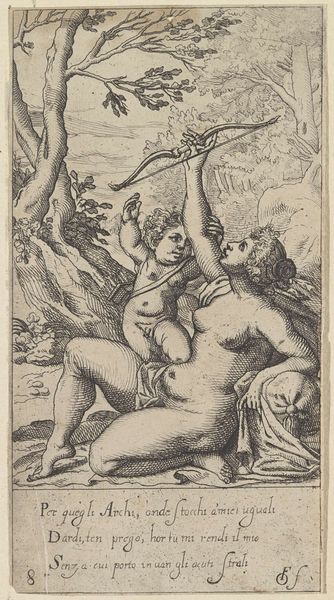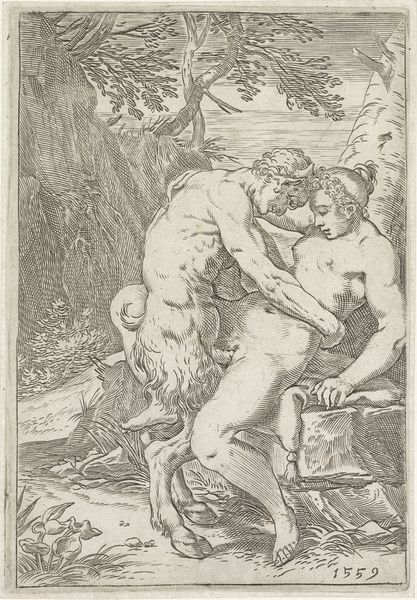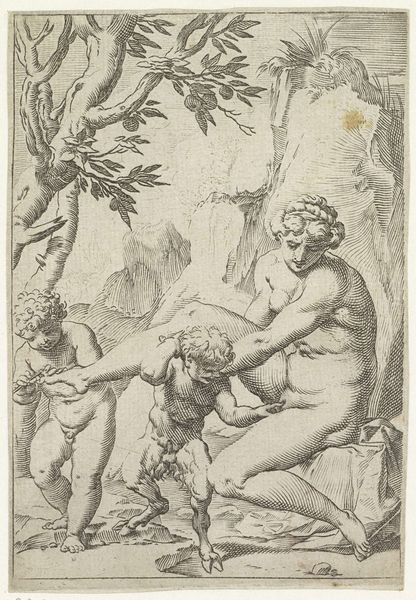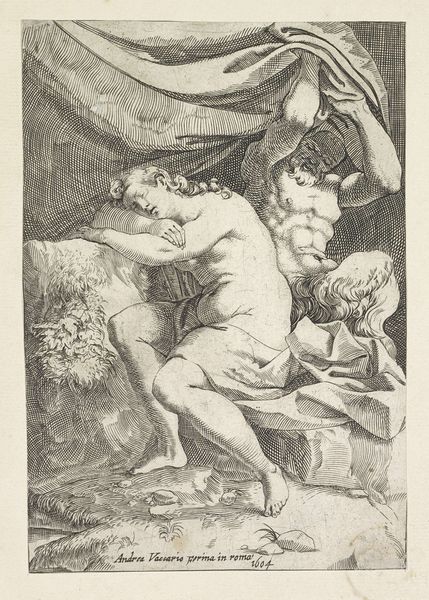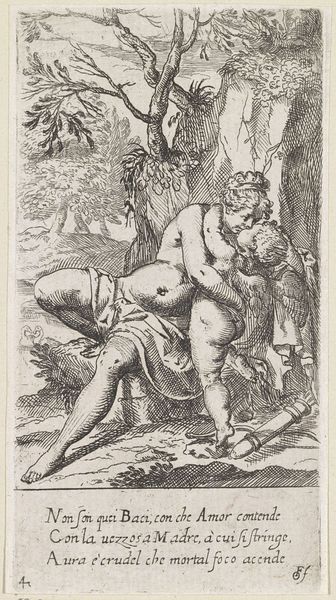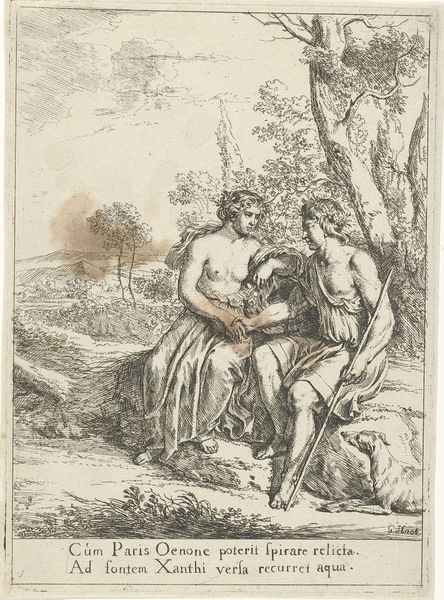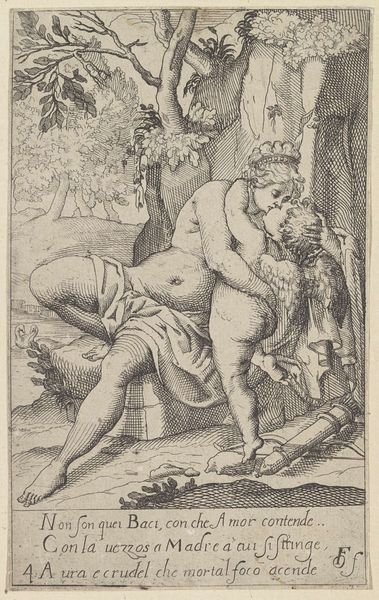
engraving
#
allegory
#
baroque
#
figuration
#
mythology
#
nude
#
engraving
Dimensions: height 188 mm, width 161 mm
Copyright: Rijks Museum: Open Domain
Curator: Editor: This is Sisto Badalocchio’s engraving, “Pan en Amor,” made sometime between 1591 and 1647. It depicts a seated Pan being tied up by Cupid, right? It’s interesting how rough the lines are, it makes it look… unfinished? What can you tell me about this engraving from a material perspective? Curator: Well, consider the function of an engraving like this. It was easily reproducible. Think about the copper plates, the labor involved in their production, and how these prints would circulate. Did they reinforce existing power structures? Or, through broader circulation, could they challenge aristocratic dominance of art and taste? Editor: That’s a cool way of putting it! So the engraving being reproducible allowed art to get to more people? Did that somehow impact artistic patronage? Curator: Precisely. And Badalocchio was active during a period of intense religious and social upheaval. These images entered the market at a specific historical moment. What meanings could be drawn, consumed, and ultimately transformed through these circulated impressions? For example, how might interpretations of Cupid and Pan differ based on social class? Editor: So, rather than seeing just a mythological scene, we need to see the print as a commodity that reflects the socioeconomic and political issues of its time? Curator: Exactly. This engraving offers us a window into how images, and the processes of their production, shape social meaning. It highlights art’s power as both reflection and instrument. Any other questions, or lingering thoughts? Editor: Yes! I will be thinking about how this simple artwork becomes something more interesting by looking at its context and production method. Thanks!
Comments
No comments
Be the first to comment and join the conversation on the ultimate creative platform.
